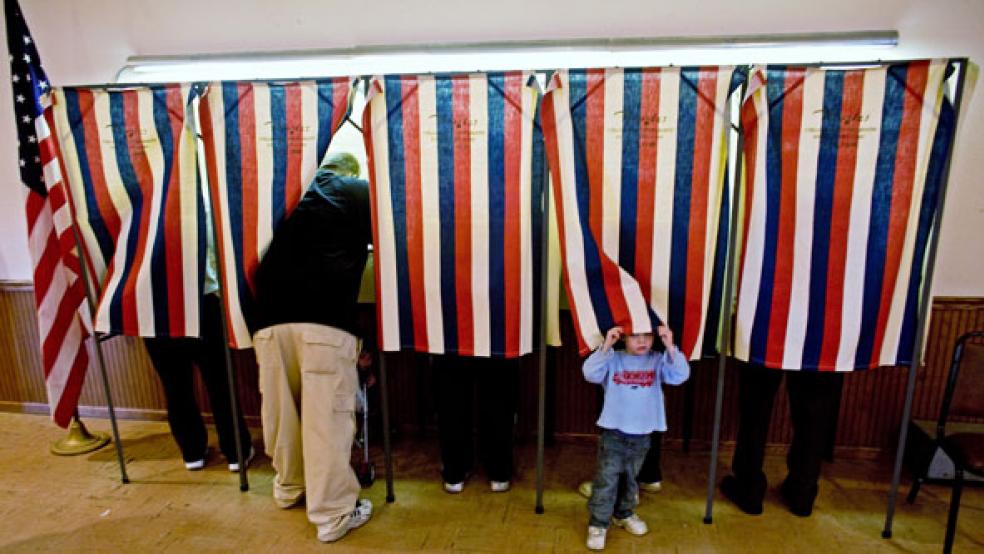Last week, the national media declared the Mitt Romney candidacy dead, after Mother Jones published video of Romney discussing government dependency and personal responsibility. This was the second death certificate issued by the commentariat in as many weeks, the first of which came when the Republican nominee criticized the US Embassy in Cairo for a statement that the White House eventually disavowed anyway.

This time, however, pundits were sure that Romney had lost the middle and working classes in the election by appearing to scold them for lacking personal responsibility and pursuing government dependency. Even as late as yesterday, Bloomberg reported in its latest poll that a majority of Americans disagreed with his assessment, and claim that the remarks show Romney “out of touch” with the electorate.
If so, don’t tell Politico and George Washington University. Their latest battleground poll showed the race between Barack Obama and Mitt Romney within the margin of error at 50/47 Obama, but also shows surprising strength for Romney among these same middle-class voters. While the overall race is within the margin of error, the middle-class results were much more significant. Ed Goeas, one of the pollsters for the Battleground series, notes that these voters tend to split closely in presidential elections. Not so in this poll; Romney has a 14-point lead in a survey taken well after the Mother Jones video, 55/41.
Far from losing the middle class to Obama, Goeas looks at the numbers and says the problem goes the other direction:
“Middle-class families are more inclined to believe the country is on the wrong track (34 percent right direction, 62 percent wrong track), are more likely to hold an unfavorable view of Obama (48 percent favorable, 51 percent unfavorable), and hold a more favorable view of Romney (51 percent favorable, 44 percent unfavorable) and Paul Ryan (46 percent favorable, 35 percent unfavorable) than the overall electorate. These middle-class families also hold a majority disapproval rating on the job Obama is doing as president (45 percent approve, 54 percent disapprove), and turn even more negative toward Obama on specific areas; the economy 56 percent disapprove; spending 61 percent disapprove; taxes, 53 percent disapprove; Medicare 48 percent disapprove; and even foreign policy 50 percent disapprove.”
It really isn’t difficult to comprehend why the middle class seems to be rejecting Obama in this election. Despite the sunny talk from Obama on the economy, his recovery has produced the worst post-recession environment for job creation in decades, perhaps going all the way back to the Great Depression. The economy has added an average of less than 85,000 jobs per month since the June 2009 end of the Great Recession, far less than the roughly 130,000 per month needed just to keep up with population growth, which has produced a 31-year low in the civilian population participation rate.
Food stamp programs have added almost 12 million recipients since the start of the recovery, and poverty has reached its highest level of the American population since Lyndon Johnson began the Great Society. According to the Census Bureau, there were 3 million more people in poverty in 2011 than in 2009, an increase of 6 percent in the population of the poor.
In other words, the middle class understands that things aren’t going …great.
Even for those managing to work through the sluggish recovery, the decline hits hard. Investor’s Business Daily reported on an analysis of more Census Bureau data by Sentier Research that shows median household income dropped again in August by 1.1 percent. This measure of income has dropped by 8.2 percent during the Obama administration, with much of the decline occurring after the June 2009 start to the recovery.

Furthermore, the Census Bureau data shows that adjusted median income has now dropped to the lowest level seen since 1997. While that decline continues, the cost of living continues to increase. Obama promised that the Affordable Care Act would stop the increase in insurance premiums by “bending the cost curve downward,” but the opposite has been true. Premiums rose twice as fast as inflation last year at 4.6 percent, according to a new Kaiser Family Foundation study. Gas prices went through the roof again this year and have remained high even after the end of the summer driving season. This means that not only are people making less money, they have to spend more just to keep up – creating what IBD calls a “middle-class squeeze” that has only gotten worse during the recovery.
Needless to say, the middle class wants some real change rather than a four-year continuation of the status quo. Can Romney make his case for that to the rest of the working class? His campaign began rolling out a new ad yesterday which features Romney talking directly into the camera about the failing recovery, the declining middle class, and the expanding poverty in the US over the last three-plus years. Romney promises that his economic policies will create 12 million jobs in the next four years, and doubles down on the issue of government dependency, rejecting the idea that criticizing the expansion of poverty and welfare enrollees is somehow uncompassionate. “We shouldn’t measure compassion by how many people are on welfare,” Romney says. “We should measure compassion by how many people get off welfare and get a good-paying job.”
At least so far, the middle class agrees with Romney. If he can make that pitch above the heads of the media, as Ronald Reagan managed to do in 1980, Romney may yet prove the media obituaries of his political future highly premature.






